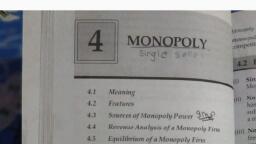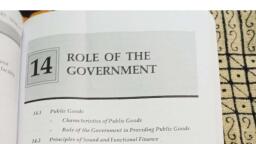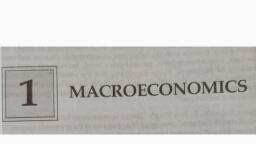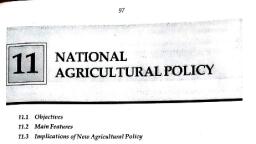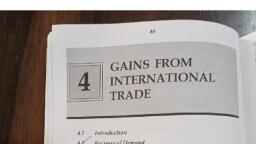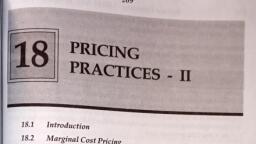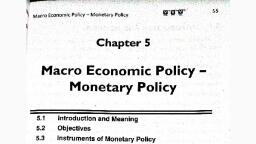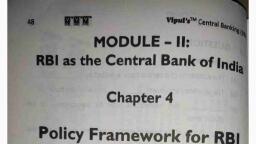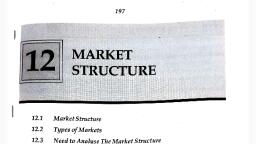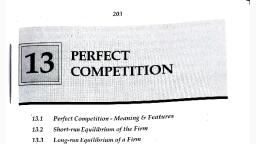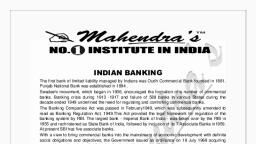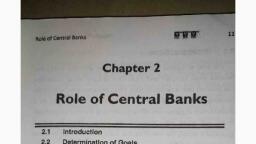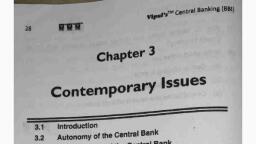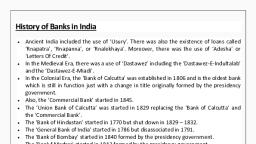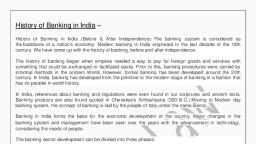Page 1 :
An Overview of Central Banking Gwe 1, , MODULE - I:, . An Overview of Central Banking, , Chapter |, , An Overview of, Central Banking, , , , , , 1.1. Concept of Central Banking, , 1.2 Institutional Growth of Central Banking, 1.3. The Changing Face of Central Banking, 1.4 Questions
Page 2 :
™ central Banking (BB!), ror veal, CONCEPT OF CENTRAL BANKING:, , a special place of signifi, As the apex authority,, the banking sector and other, , and development of the, f the central bank. It, licy and ensures price, from traditional, , , , cance in the, the central, , 1, Central bank occupies, monetary system of a country., , bank regulates and monitors, financial institutions. The organisation, banking sector is the main responsibility °, formulates and implements the monetary po, , stability through various measures. Apart, functions, central banks in the modern era perform a variety of, , other functions. Central bank, hence has a pivotal note in the, banking and financial system of a country., , DEFINITION:, , Economists have defined a central bank in terms of its, functions. Economist R. C. Hawtrey defines a central bank as, Tender of the last resort’. According to Vera Smith a central bank, is one which has complete monopoly of note issue. Paul, ee peeon considers central bank as a bankers’ bank In ne, . “staes the ots Principle of a central bank is that, , act only in the public interest and for the welfare of the
Page 3 :
of Central Banking, , 4d INSTITUTIONAL GROWTH _oF — CENTRAL, oO — zs :, & BANKING:, , Central banks have been in ekistence since the. 1650s. Over a, , iod of time they have evolved as the main monetary authority, , peri, regulating and controlling the financial system of the economy., they acquired, , Though central banks existed in the 16th Century,, prominence since the beginning of the 20th century. The number, of central banks which was about a dozen in the beginning of the, 20th century increased to 160 in recent times. The significance of, central banking enhanced further since 1980s. Many factors, contributed to this growth of central banking both in developed, , and developing economies. Some of the notable ones are:, , , , (1) Rapid growth of the financial sector., , (2) Integration of the economies due to globalization., , (3) Free flow of capital between nations due to liberalisation., (4) Substantial increase in the volume of international trade., , (5) Changes in the exchange rate mechanisms adopted by, , countries., , (6) Significant growth of the services sector leasing to more, , transactions, etc., , The above factors necessitated an active note of the central, , bank. Both in advanced and developing economies central banks, acquired a pivotal role. In the case of emerging economies like, Biespore, Malaysia, Thailand etc. Central banks are all the more, important to regulate the growth of the financial sector, ensure, Price stability and control, volatility in exchange rate. Of all the, i.
Page 4 :
vipul’s™ Central Banking (BBI), , , , : f England is said to be the oldest one~, Bar teu co tral banks are known by different names, a , zi USA it is called as the Federal Reserve, ; tem, ig Daelia, it is named as the Reserve Ban of, i. and in Canada as the Bank of sae in ae, Bank of England etc. The central bank of India is the Reserve, , of India., , EVOLUTION OF THE RESERVE BANK OF INDIA:, , The Reserve Bank of India was established in 1934 through the, Reserve Bank of India Act 1934. It started its operations from 1st, April 1935. It was nationalised in 1949. It is the apex authority of, the banking sector and leader of the money market. RBI performs, a variety of functions ranging from the traditional to regulatory to, developmental and promotional functions. It formulates and, implements the monetary policy. With the introduction of LPG in, 1991, the role of RBI has become all the more significant. It is, , hence, enhancing capital forma tion,
Page 5 :
Ar of central Banking, Vos CHANGING FACE OF CENTRAL BANKING:, , The central bank is the apex institution of the banking and, monetary sector. It is the leader of the money market. Worldwide, central banks today play an important role in ensuring monetary, and financial stability. Along with the traditional functions,, modern central banks assume more and more responsibilities in, , , , the present day dynamic world., , Central banking as an institution evolved in the 20th century., From few banks in the earlier century, the number has increased, significantly. The role, functions and objectives of central bank, differ from country to country depending on the state of, development and national priorities as outlined by government., , However some of the important functions associated with central, banks are:, , (1) Issue of Currency Notes:-One of the basic functions of a, central bank is to issue currency notes. It bas monopoly of, note issue. This function enables it to control and regulate, money supply. This function has to be discharged efficiently, to instill and retain public confidence and also to maintain, uniformity and security. Different countries adopt different, systems of note issue to perform this function,, , (2) _Banker to the Government: Central bank acts as an agent and, advisor to the government. It accepts receipts and makes, Payments on behalf of the government. Credit requirements, of the government are met by the central bank. On crucial, , issues it advises the government and aids the government in, implementation.

